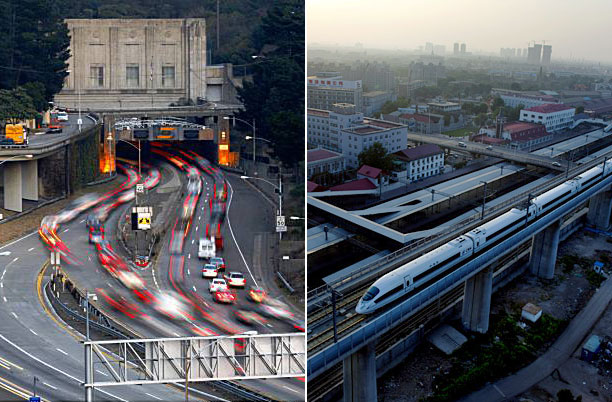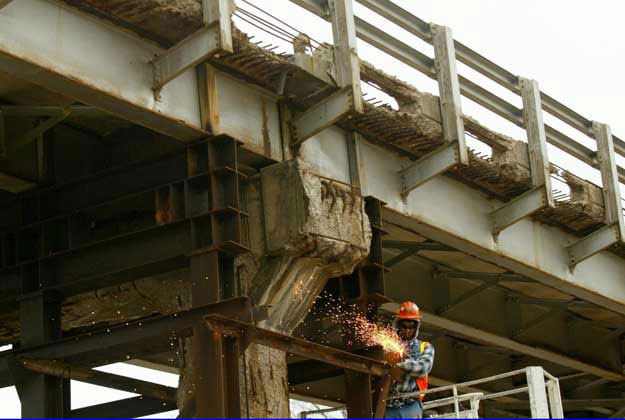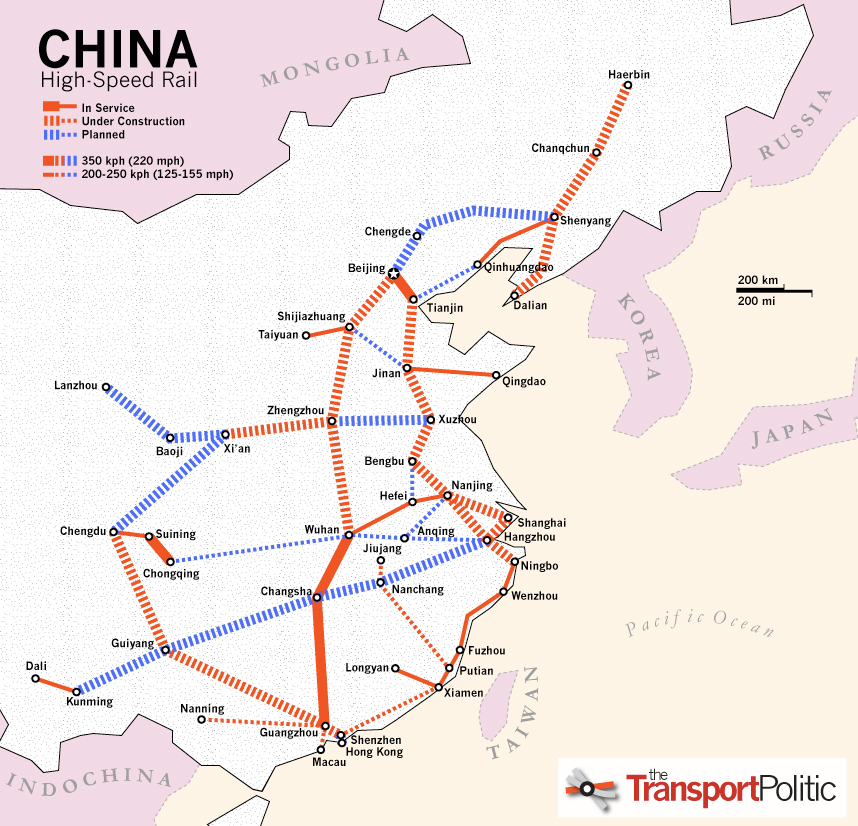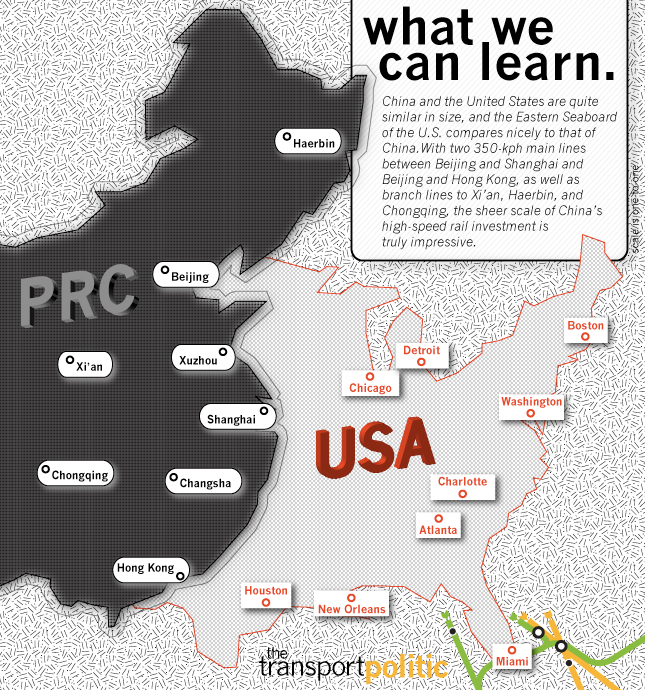This article was scraped from Rochester Subway. This is a blog about Rochester history and urbanism has not been published since 2017. The current owners are now publishing link spam which made me want to preserve this history.. The original article was published December 30, 2009 and can be found here.

Similar to how the Interstates reshaped America 50 years ago, the Chinese landscape is now being reshaped by historic levels of infrastructure spending. While the U.S. government seeks to revive it's struggling economy in part by spending billions on shovel-ready, band-aid projects (i.e. re-surfacing roads), it seems Beijing's goal is to put 26 million Chinese to work building new high-speed rail connections between its cities.
The U.S. Paves It's Way to Recovery

To date, the U.S. Department of Transportation has approved more than 11,300 transportation projects, worth $32.1 billion to be funded through the American Recovery and Reinvestment Act of 2009 (ARRA). Of those projects the overwhelming majority, 10,000 to be exact , are highway related.
Construction on some of the nation's largest infrastructure projects is just beginning. The Caldecott Tunnel in San Francisco, set to start construction in early January will be one of the largest ARRA projects in the nation at $192.4 million in ARRA funds. Other major projects will include widening I-215 in San Bernardino, California ($128 million in ARRA funds), widening I-405 in Los Angeles ($189.9 million from ARRA) and the reconstruction of the US19/SR 55 interchange in Clearwater, Florida ($45 million in ARRA funding). All of these highway projects should be completed within 4 years.
In a press release dated Monday, December 28, 2009, Transportation Secretary Ray LaHood said, "What better way to cap off the year than with 10,000 highway and bridge projects putting people back to work, strengthening the economy, and making travel safer for everyone."
China Lays Tracks for Growth

While the U.S. stimulus plan also includes $8 billion in grants for high-speed rail, get a load of this... By 2020, China plans to pump $300 billion into a vast high-speed rail network which will be the largest in the world when it's completed. The enormous infrastructure build-out is part of China's economic push to become a world "Superpower", but also part of an effort to ride out the global financial crisis.
Last November, as the global economy imploded, China announced a two-year, $585 billion stimulus package ( press release or about 13% of 2008 GDP). With infrastructure spending at its core, Beijing would pour money into bridges, ports, and railways in the hope that it could stimulate growth and absorb the excess work force that exporters were shedding as foreign sales shrank more than 20%. And because China's high-speed rail project had been in the works since 2005 (in preparation for the 2008 Summer Olympics) it was able to more than double its rail spending this year because, for the most part, it could simply move up plans that were already in place. THAT'S shovel-ready.
So, in 2020, while some drivers in California are sitting in traffic on a wider Interstate 405, much of China's population will be able to move at speeds of more than 125 mph between any major city. 40 new high-speed rail lines, measuring 11,150 miles in total with eventually connect all Chinese cities with a population of 200,000 or more.
Additional points to consider:

Geographically the U.S. and China are nearly equivalent in size.
Since China already has a passenger rail network about the size of our highway system, it will be nearly doubling its mileage of intercity connections.
In addition to high-speed rail, the Chinese are also building a national highway network which many believe will surpass our own interstate highways (in mileage) by 2015.
Through July 2009, China had about 1,200 miles of high-speed rail installed with 16,000 total miles planned. The U.S. has about 457 miles installed. No new lines have been decided but the $8 billion in stimulus has to be spent by 2012.
China has a population that is six times that of the United States, but only has one-50th of the US' airports.


